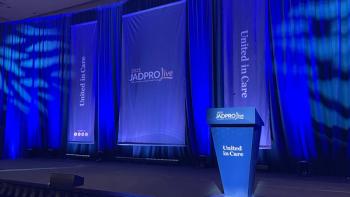
Nurse Expert Calls for Better Provider Awareness of SBRT

Stereotactic body radiation therapy (SBRT) is highly effective, and potentially curable for early-stage lung cancer, though not many physicians use the therapy, says expert Molly Freeman, CNP.
Stereotactic body radiation therapy (SBRT) is a highly effective, yet not well-known or widely used treatment for early-stage lung cancer, says Molly Freeman, CNP, a nurse practitioner who specializes in radiation and thoracic oncology at the Cleveland Clinic.
In an interview with Oncology Nursing News, she explains the procedure — which typically has few adverse events – and emphasizes the need for more awareness about SBRT and what survivorship looks like for patients who have undergone this procedure.
With regards to SBRT, what advancements have you seen or hope to see in the next few years?
What I would like to see with SBRT is more education regarding the procedure itself in the community hospitals. Many providers are not even aware that this type of radiation is available as an option for non-surgical, curative management of early-stage lung cancers. So the more awareness we get out there, the more patients can benefit from it.
Is there a specific group of patients that is more suited for SBRT, or a group that should get this type of therapy?
It's extremely well-tolerated, even by very debilitated patients. We typically see patients that, for some reason, are not considered appropriate for surgical resection, due to poor functional status or cardiopulmonary comorbidities, especially. So typically the patient we would see would be someone who has been diagnosed with an early-stage lung cancer, a negative metastatic evaluation, who just is not operable.
Are there any adverse events or effects to look out for?
There are really absolutely no adverse events. Oftentimes, at the last treatment, when I see a patient, they want another CAT scan to make sure it worked because they didn't feel anything. They're very amazed. It's fun at their follow-up to show them one set of CAT scans to the next
But in regards to adverse effects following this, I think the main complaint, which is a very small population anyhow, would be a little fatigue, not debilitating. And then based on the size and the position of the radiation mass, some of the larger, more peripheral masses, over time can cause some chest wall aching, which kind of feels like a muscle pull. The bigger tumors can cause some radiation pneumonitis down the road, but those are some things that we actually can educate the patients about expecting so that we can manage those things effectively.
What are some things that patients can expect right after treatment?
Right after, we tell patients that there's absolutely no restrictions. They walk out the door, they take their regular medications, there's no restrictions. They just go about their normal lives. If they are to expect some of the chest wall symptoms or increased shortness of breath or anything like that, which is very rarely seen, we'll let them know about that. At the first follow up in 6 to 8 weeks, we see usually a decrease in the size of the primary mass surrounded by a little inflammation, and then the next follow up is in 3 months, and then it further decreases. Usually it's over 6 months that we watch this mass recede and scar down to what could be a scar for the rest of their lives.
What would you consider the most important parts of forming an effective survivorship plan?
I think that the most important part of forming an effective survivorship care plan is personalization with each patient and timely delivery. Many times we see patients who, during treatment, they have access to daily support and management of different side effects and that sort of thing. And then when they're done, there's a lot of apprehension at being on their own. So implementing that survivorship care plan early helps to ease that transition into survivorship, as well as re-introduce the primary care provider into their care again.
What's the big takeaway of what you'd really want people to know about?
It's kind of nice, but with this kind of treatment, we treat such early stage malignancies that survivorship is very easy because there's not a lot of anticipated support that will be needed. On occasion, if they do get scarring along the chest wall, then we will continue to manage those things.
But I think a big important point to take home would be for providers who aren't that familiar with this treatment, because oftentimes we get feedback from the patient if they had a CAT scan in an outlying facility for something like pneumonia, there is a lot of alarm raised, even by radiologists, who aren't familiar with what post-SBRT effects look like and there can be unnecessary biopsies and treatment administered. So I think it's just encouraging their other care providers and educating the patient not to be too alarmed and to send it to their radiation oncologist for review so that we can confirm having more recent scans to compare to, that this is indeed just a scar and nothing to proceed with any intervention for.
Newsletter
Knowledge is power. Don’t miss the most recent breakthroughs in cancer care.

















































































